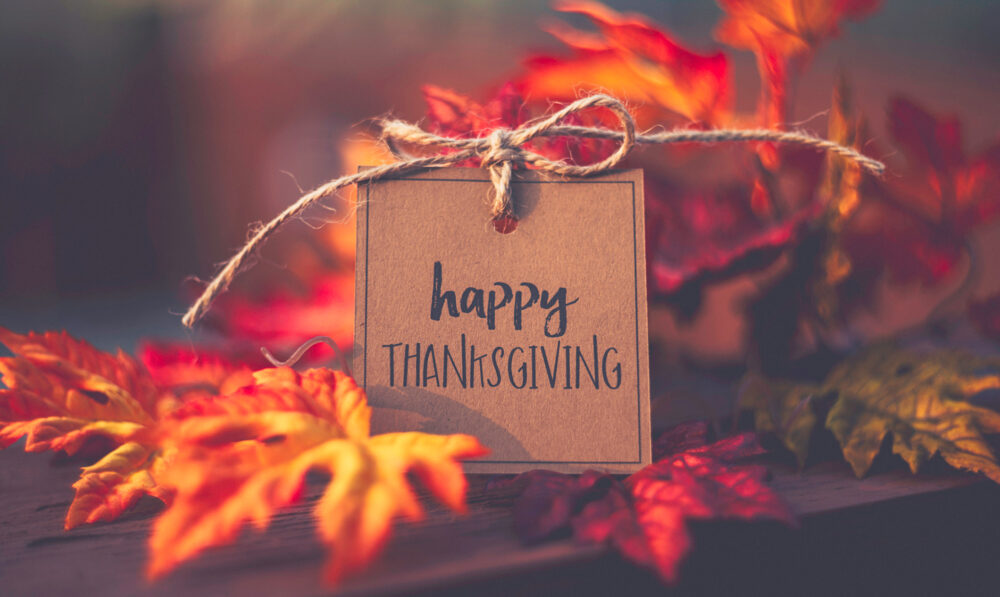Food, friends, family, music, memories…all of these and more are what make Thanksgiving wonderful year after year. But what if your loved one is in a memory care home?
Fortunately, there are many ways to celebrate Thanksgiving with a loved one who has dementia or significant memory loss. If your loved one is in memory care one of the biggest challenges, safety, is already handled. That means you can relax and enjoy the day. With a little planning and preparation, and a lot of flexibility, you can still give thanks and express the joy and gratitude of the holiday.
First step: manage expectations
Maybe you were raised with mom getting up at six a.m. to put an enormous turkey in the oven and by noon the house was full of family and friends. Or your Thanksgivings focused on the Macy’s Thanksgiving Day Parade in the morning, and food from your favorite local grocery store on the table in the evening.
With mom or dad in a memory care home, this is the year to dial back to the essential things that really matter to your family and friends. The six-a.m.-turkey and full Thanksgiving menu might be a shared turkey sandwich at your loved one’s new home, but the afternoon of watching football while snacking can still happen.
Which activities and traditions you change depend on where your loved ones are on their journey. Individuals in a memory care home are on their own unique path, and it’s important to meet them where they are. The Validation Method, which our staff who work in memory care are trained in, is a person-focused way of communicating with someone who has dementia and memory loss. The concept is that rather than trying to bring the person with memory loss back into our reality, it’s better to enter his or her reality. The purpose is to reduce anxiety and resolve any worries that may keep a resident who has memory loss from enjoying social interactions.
Thanksgiving and other holiday celebrations are social by definition. In order for everyone to enjoy the occasion try to find a way to be in your loved ones’ reality. What does this mean in practical terms? If they loved to cook find a simple way to share that – have them help put whipped cream on the pie you bring. Or if food is now a challenge, switch to a shared activity that’s not food-centric like:
- Jigsaw puzzles
- Painting with watercolors
- Flower arranging or crafts
- Listening to favorite music/record albums or playing an instrument
- Reminiscing or sharing family history
- If the weather cooperates, an outdoor walk
(Here are other tips for a successful visit with your loved ones either at their home or yours.)
Be flexible about timing
No matter how your family celebrated in years past, it’s going to be different with a loved one in a memory care home. One of the biggest changes is around schedule. Routine is extremely important to people with dementia or other memory issues. A good memory care home will provide an environment of familiar routines and activities, which is both comfortable and calming. A holiday, even a beloved one like Thanksgiving, disrupts those routines.
There may be a time of day when your loved ones are generally at their best, and that time may not line up with the traditional Thanksgiving dinner. Remember: brunch or lunch are just as tasty.
Some people with memory loss become agitated or anxious in the late afternoon or early evening, a condition called “sundown syndrome.” With shorter days, this will happen earlier during the holiday season. If you’ve noticed that dusk or late afternoons are hard for your loved one, or staff has told you that it is, plan your Thanksgiving visit while the sun is still shining.
Work with the memory care home’s staff and learn about special meal times and planned holiday activities or excursions that are scheduled during Thanksgiving week. This information will help you find a time that works for a family Thanksgiving visit, possibly even for the meal at the memory care home, and doesn’t interrupt the routine of your loved one.
Prepare your loved one for the celebration
With memory loss can come confusion, including about the identities of friends and family. If friends who don’t visit often, or relatives your loved one doesn’t always recognize, are planning to visit for the holiday there are ways to help your loved ones. Try to re-familiarize them with expected guests before the visit. Show photos, share stories or arrange a phone or video chat prior to the in-person visit. Creating an invitation to the event, with your loved ones’ help if they enjoy crafts, and giving it to your loved one will help remind them about the details of the planned celebration.
About the Thanksgiving meal
Thanksgiving celebrations usually center around food. The food eaten at holidays may, in fact, be the ultimate comfort food. There’s a wealth of research about the link between food and memory. As stated in this Smithsonian article, “there is something in comfort food’s ability to evoke belonging and memory.”
With memory loss it is, as with so many things, hard to predict how a person will react to food. Your loved ones may take a bite of sage stuffing and light up at a memory or spit it out because their tastes have radically changed. While that’s hard, because your memory is of making stuffing with mom and sneaking bites of it hot out of the oven, it’s important to let your loved ones take the lead on what they like to eat.
Remember, no matter how you do it, celebrating Thanksgiving with your loved ones in their memory care home doesn’t mean you can’t enjoy the holiday. It’s just a different way to make new, wonderful memories.
Learn more about how Country Meadows helps seniors in memory care with the challenges and joys of daily living and holidays. Call or schedule a tour today! Our co-workers are here to help.




